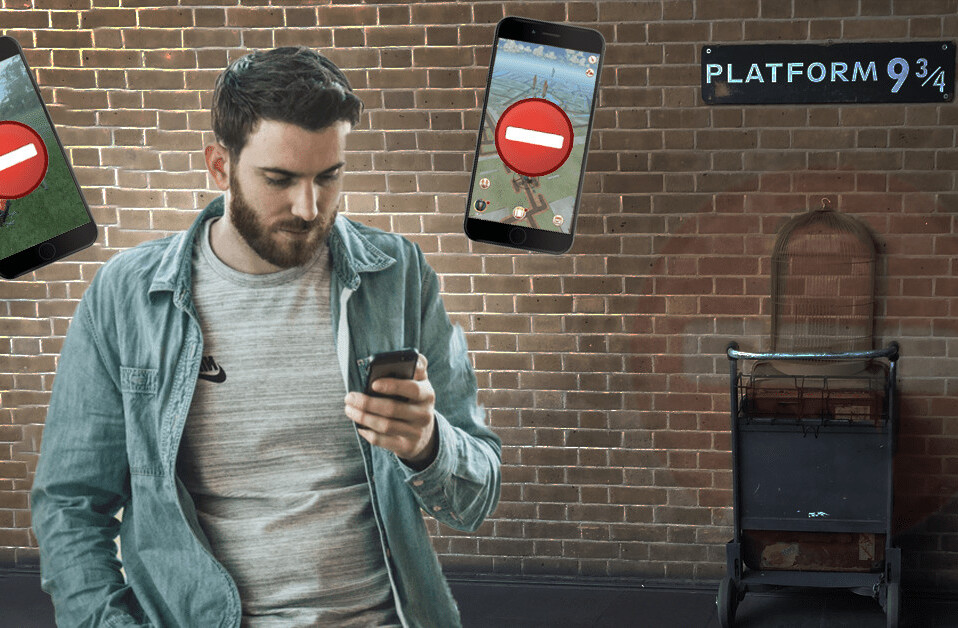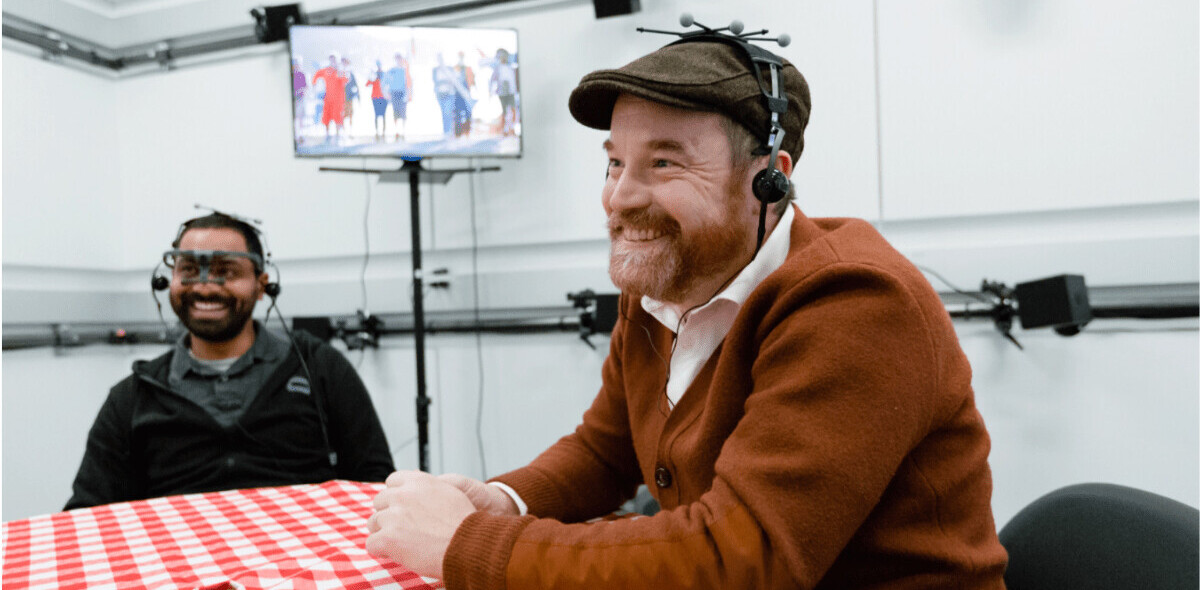
 (Before you read all this, as interesting as it is – I realise many of you are busy so I kindly created a “if you read nothing else, read this” section at the bottom – I won’t be offended if you skip ahead :)
(Before you read all this, as interesting as it is – I realise many of you are busy so I kindly created a “if you read nothing else, read this” section at the bottom – I won’t be offended if you skip ahead :)
A new form of technology is about to take the world by storm. In reality, its not very new at all, its mainly been used within specific industries, or in advertisements & films giving us brief glimpses of what the future would be like.
Up until now, the technology known as ‘augmented reality’ has mainly been confined to gaming, military, entertainment, architecture and medicine, however, thanks to a new era of mobile power – we, the consumer, are about to finally experience what sci-fi movies have teased us with for decades.
What is Augmented Reality?
Augmented Reality (AR) is essentially the fusion of real and virtual reality, where graphic objects are blended into real footage in real time. AR creates the illusion that virtual, computer-generated objects exist in the real world.
What Augmented Reality Has been Used for Until Now
As consumers and individuals, we’re only beginning to see the capabilities of AR in our day to day use. In industries the world over however, AR has been in use for quite some time.
In the military for example, AR has been used for a number of years in the windscreens or headgears of soldiers which provide information about their surroundings. Military strategists have been using navigation systems to position friendly and enemy units, and often AR allows you to spot more details than human eye is capable of.
httpvh://www.youtube.com/watch?v=FdC-PRmNcRs
In medicine, AR has been used in areas including surgery simulations, ultra-sound projections, Visualization of anatomical joints in motion, neurosurgical procedures, surgical education.
Gamers have been developing ARG’s to push the boundaries of our imagination. Check out ARhrrr, an AR shooter for mobile camera-phones, created at Georgia Tech Augmented Environments Lab and the Savannah Colelge of Art and Design.
httpvh://www.youtube.com/watch?v=cNu4CluFOcw
The future of Augmented Reality and How We’ll Be Using It
This is where many analysts and technology enthusiasts disagree, but frankly it’s quite feasible for all to be right.
Many believe Advertising is where AR will lend itself the most. For those who haven’t seen examples, there are mobile applications being developed, and even already launched (see our review of Layar) which although appear ideal for navigation and tourism purposes – also are ideally suited to location based advertising to a specificity we have never seen before.
Tagit and DAEM Interactive recently announced that they have formed a strategic partnership to roll out Augmented Reality Technology for Mobile Phones. This will enable camera-phone users to interact with any media channel for obtaining information or digital content. This dynamic mobile image recognition system “augments” the reach of advertisements by allowing users to capture images of products or logos and instantly receive relevant information on their mobile phones, thus creating interactivity between users and advertisers. If you’re still unsure, have a watch of this:
httpvh://www.youtube.com/watch?v=S-G8u-01t0k
On a similar note, tourism is considered to receive the largest impact from AR’s development. While tourist agents and guides are likely to see their jobs either made much easier or replaced entirely, we the consumer are likely to see a world of mobile applications and gadgets designed to tell us where we are, what we can do and what we can learn.
Other believe AR’s future lies in the world of education.
AR has many advantages over traditional manual-based and VR models in training and learning applications because users can see and touch the real objects, and at the same time have an interactive guided support to allow the users to work at their own pace. This support includes highlighting and sequencing specific objects in the users’ field of view, depending on the task and the users’ experience, or presentation of documentation. Furthermore, it would be possible for a remote expert to provide assistance by controlling the information displayed by the system.
The combination of AR technology with the education contents gives birth to a new type of automated applications and act to enhance the effectiveness and attractiveness of teaching and learning for students in a real life scene.
It won’t be long before we see AR applied to more unique applications. You could live in a hut, but with AR glasses, your child sees a palace. It shouldn’t be long before we see animated books, reports and magazines…
If you read nothing else, read this.
 One day, in the genuinely not so distant future we will live in two worlds; reality and augmented, neatly combined into one. Computers as we know them will change drastically, laptops, netbooks, desktops will all be a thing of the past and hardware (from a consumer point of view) will constitute a mobile device – maybe glasses (see iWear) , but definitely a headset of sorts. And whatever device it may be, y0u’ll be wearing it day in day out, and it will become as integrated a part of your life as brushing your teeth is today.
One day, in the genuinely not so distant future we will live in two worlds; reality and augmented, neatly combined into one. Computers as we know them will change drastically, laptops, netbooks, desktops will all be a thing of the past and hardware (from a consumer point of view) will constitute a mobile device – maybe glasses (see iWear) , but definitely a headset of sorts. And whatever device it may be, y0u’ll be wearing it day in day out, and it will become as integrated a part of your life as brushing your teeth is today.
Seriously now, imagine you’re the Terminator. Thanks to your device, you’ll be able to shop ‘on the web’ as you walk down the street without the need to physically touch anything. You’ll learn about where you are and who’s been there as you go about your day. You’ll be able to watch re-enactments of historic events that took place right there and then.
You’ll be able to compare products and prices by simply looking at the item in a shop window, and be given directions to the nearest shop where you can buy the item for cheaper. You’ll be able to learn how to do things easier than ever, whether its flying a plane or putting together Ikea furniture – thanks to detailed visuals and realistic simulations, it’ll be a piece of cake. Waterproof AR devices will make scuba diving an even bigger learning experience with detailed information about the breadth of underwater life.
You’ll never ever be lost, unless you lose your device that is – but hopefully it’ll be cheap enough to one day buy a replacement from your local store. Gamers will be fit! Yep, no more sat in front of your computer, you’ll be outside acting out your in-game characters.
It wont all be fun and exciting however, our privacy will continue to be threatened, we’ll be able to find information on any by simply looking at them, coincidental meeting of friends simply won’t happen any more , advertising will be thrown in our faces and elements of discovery and research will be lost.
For now, this will all begin to happen via our mobile phones (see our review of the first mobile augmented reality app Layar) – constrictive no doubt – but in time that will change and it’ll be sooner than we think. Don’t underestimate the potential here, this is big and we’re not even seeing the tip of the iceberg yet.
Get the TNW newsletter
Get the most important tech news in your inbox each week.





